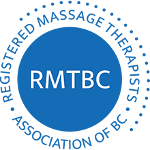Other Services
Myofacial Release
Every tissue and organ in the body is supported by a three-dimensional soft tissue matrix called fascia. It responds dynamically to both internal and external pressure. Injury to the fascia can cause loss in its ability to respond to these forces because its fibers start adhering to each other. This causes the fascia to lose their ability bounce and recoil and creates a drag throughout its planes.
Myofacial release therapy (also called myofascial trigger point therapy or myofascial therapy) uses gentle, safe, low-load stretches to release adhesions and tightness. Mayofascial therapy can result in alleviation of pain, improvement of athletic performance, and greater flexibility and ease of movement. It can also bring about better posture, emotional release, deep relaxation, or general feelings of connection and well-being.
PNF Stretch
Proprioceptive Neuromuscular Facilitation (PNF) is one of the most helpful forms of flexibility training for increasing range of motion while also improving muscular strength. It is an advanced form of flexibility training that involves components of stretching, muscle contraction and further stretching. This process is usually repeated several times and activates the muscle spindles help elongate your muscles.
Joint Mobilization
By moving joints passively, joint mobilization can restore motion or relieve pain. This technique is usually applied to an injured area of the body to promote healing.
Usually mobilization treatment will involve the practitioner mimicking the regular movement of a joint by applying force to the joint. At times, the target area is held for an extended period of time so that stretching can occur. The movements are slow and the patient can stop them at any point.
Injury Rehabilitation Therapy
Rehabilitative care focuses on healing after sport or accident injury. It involves an assessment of physical function, treatment of dysfunction, maintenance and maximization of function and prevention of future dysfunction. Often including strength-building exercises, this type of therapy helps restore function, improve mobility, relieve pain, and prevent or limit permanent physical disabilities. Flexibility, endurance, balance, coordination, and strength are all developed in rehabilitative therapy.


